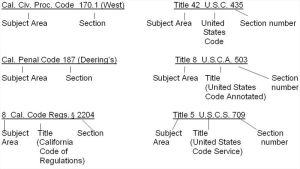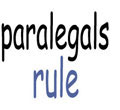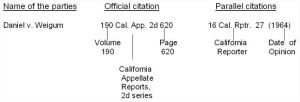Twenty-two states (22) in the union use judicial foreclosure proceedings while the rest utilize individual state-provided steps undertaken by attorneys to foreclose. But what is the difference?
In a judicial foreclosure, a lender will file a complaint which commences the legal action to foreclose on a home or piece of real estate. The lender files a notice in the public land records making its claim to the property known to the public, particularly to potential buyers, creditors, and other parties who may be interested. The complaint will state the debt owed and the amount of the default. The complaint is a formal pleading to the court asking for legal permission to foreclose on the property and take it as a remedy for non-payment.
The homeowner is served notice of the complaint and is permitted to dispute the facts or offer any other type of defense. The homeowner may even file a counterclaim, a separate suit altogether, and may attend a court hearing on the matter where the homeowner has an opportunity to show there are discrepancies in material facts. If this is the case, a trial will be held to determine whether or not the foreclosure may move forward. Should the court determine that the lender’s complaint is valid and that the homeowner did indeed default on his/her payments, then it will issue a judgment in favor of the lender. The judge in the case determines the full amount owed via an affidavit submitted by the servicer that itemizes the debt plus costs for the foreclosure proceedings. A sheriff’s sale will follow in the form of an auction, and the highest bidder–typically the servicer–becomes the owner of the property. At this time, the property then becomes known as real estate owned (REO).
States utilizing judicial foreclosure are:
Connecticut
Delaware
Florida
Hawaii
Illinois
Indiana
Iowa
Kansas
Kentucky
Louisiana
Maine
New Jersey
New Mexico
New York
North Dakota
Ohio
Oklahoma
Pennsylvania
South Carolina
South Dakota
Vermont, and
Wisconsin
The remaining states utilize a non-judicial form of foreclosure whereby attorneys follow a prescribed state-specific statutory procedure. In these cases, the mortgage documents grant lenders the “power of sale” outside the judicial process, making court intervention and affidavits unnecessary in these cases.
Typically, the homeowner is alerted by a default letter, followed by a prescribed period of time in which to cure the default. Should the homeowner be unable to cure the default, a Notice of Sale will be mailed and posted in public places and/or newspapers. A public auction is then held, and again the highest bidder becomes the new owner of the property.
This is essentially a simplified synopsis of a usually complicated process, so check your state’s local rules. For example, here in Texas, one can actually utilize a judicial OR a non-judicial foreclosure proceeding. Most attorneys prefer the non-judicial avenue for its relative ease of implementation, but there may be advantages to running the foreclosure process through the court system as well. It really depends on each individual situation.
NOTE: I am not an attorney. If you need legal advice on your own foreclosure situation, I encourage you to contact an attorney licensed to practice in your state.
For more info:
Uniform Law Commission’s summary of its non-judicial foreclosure act
Foreclosure laws and procedures by state
How foreclosure works in your state
Interesting blog by foreclosure defense guru Neil Garfield, JD, MBA of The Garfield Firm
Full disclosure~~Source: Mortgage Bankers Association
Sami K. Hartsfield, ACP is a senior paralegal at a consumer law firm and freelance writer based in Houston, Texas. She is a NALA Advanced Certified Paralegal, and has earned six specialty certifications since 2007: Discovery; Trial Practice; Contracts Management; Social Security Disability Law; and Entity & Individual Medical Liability. She is also WestlawNext certified. Sami has worked as a law firm Webmaster, law firm social media marketer, and a ghostwriter for personal injury law firms. She holds a degree in paralegal studies with a 4.0 GPA and a bachelor of science degree in political science, graduating summa cum laude. Sami interned with Texas’ 14th Court of Appeals under Chief Justice Adele Hedges, and completed the University of Houston Law Center’s Summer 2008 Prelaw Institute with a 4.0. You can find her on Facebook and e-mail her with questions, comments, or ideas at LegallyBlog@yahoo.com.
LegallyBlog® on Facebook
Copyright 2012 Sami K. Hartsfield – All Rights Reserved
What is a Freedom of Information Act (FOIA) and how do I make one?
Click link above to view my article in the National Paralegal Reporter!
Sami K. Hartsfield, ACP is a senior paralegal at a consumer law firm and freelance writer based in Houston, Texas. She is a NALA Advanced Certified Paralegal, and has earned six specialty certifications since 2007: Discovery; Trial Practice; Contracts Management; Social Security Disability Law; and Entity & Individual Medical Liability. She is also WestlawNext certified. Sami has worked as a law firm Webmaster, law firm social media marketer, and a ghostwriter for personal injury law firms. She holds a degree in paralegal studies with a 4.0 GPA and a bachelor of science degree in political science, graduating summa cum laude. Sami interned with Texas’ 14th Court of Appeals under Chief Justice Adele Hedges, and completed the University of Houston Law Center’s Summer 2008 Prelaw Institute with a 4.0. You can find her on Facebook and e-mail her with questions, comments, or ideas at LegallyBlog@yahoo.com.
**Reprinted with generous permission from the National Paralegal Reporter Feb/March 2012 issue.
 Today’s guest post comes to us from Daphne Drescher. Daphne is a virtual litigation paralegal and owner of California-based Drescher ProParalegal. She is also an instructor in the Paralegal Degree Program at Empire College.
Today’s guest post comes to us from Daphne Drescher. Daphne is a virtual litigation paralegal and owner of California-based Drescher ProParalegal. She is also an instructor in the Paralegal Degree Program at Empire College.
PRACTICE TIP
Depositions: More Scheduling Rules At Your Fingertips!
As you know by now, I like having rules I use frequently in one place for ready reference. Need to schedule a deposition in a Federal Court jurisdiction? Follow these guidelines:
Party or Non-Party. Service of a deposition notice is enough to require the testimony and production of documents or things of a party to the litigation. However in order to depose a non-party, a deposition subpoena must be served upon the deponent. (Fed. R. Civ. P. 45(a))
Timing. Federal court rules strongly encourage the parties to complete their Rule 26(f) Discovery Plan prior to the commencement of discovery. So to take a deposition prior to the Rule 26 discovery conference, the parties must either stipulate to early discovery, or must seek permission from the court. (Fed. R. Civ. P. 30(a)(2)(iii))
Number of depositions. A party may not take more than ten depositions without permission from the court. (Fed. R. Civ. P. 30(a)(2)(A)(i))
Duration. Unless stipulated or ordered by the court, each deposition is limited to 1 day of 7 hours. (Fed. R. Civ. P. 30(d)(1))
Local Rules. Check your local court rules. For example, California Northern District LR 30-1 requires conferring with opposing counsel prior to scheduling a deposition.
Notice Contents. A deposition notice must contain the time and location of the deposition, and the deponent’s name and address, and the method for recording the testimony. (Fed. R. Civ. P. 30(b)(1) and (3))
Notice Timing. The deposing party must give “reasonable written notice” to every other party. (Fed. R. Civ. P. 30(b)(1)). While the rule doesn’t specify a notice period, note that Fed. R. Civ. P. 32(a)(5) prohibits the use of a deposition against a party at trial when less than 14 days is given, and the deposition occurs before the time a promptly filed motion for protective order can be heard.
Documents. If the deponent is required to bring documents to the deposition, the noticing party must serve a Rule 34 request to produce documents upon a party deponent, or a subpoena duces tecum upon a non-party deponent, specifying the requested materials. (Fed. R. Civ. P. 30(b)(2))
Location. When a deponent is not a party or an employee of a party, he or she cannot be compelled to travel more than 100 miles from his/her residence or place of employment. (Fed. R. Civ. P. 45(b)(2))
***For more information, visit Daphne’s website at http://proparalegal.com, where you can subscribe to the free Drescher ProParalegal Newsletter full of litigation practice tips and resources for legal support staff.
To learn more about Daphne, go here.
Daphne’s post reprinted with permission–thanks for sharing with us, Daphne!
If interested, please see my other posts on discovery:
What is discovery, and what are interrogatories?
What is a discovery subpoena?
Discovery II: What are requests for disclosure?
Discovery III: What are requests for admissions?
Discovery IV: What are requests for production?
Discovery V: Depositions–What is a deposition on written questions, or DWQ?
Discovery top ten fundamentals
Sami K. Hartsfield, ACP is a senior paralegal at a consumer law firm and freelance writer based in Houston, Texas. She is a NALA Advanced Certified Paralegal, and has earned six specialty certifications since 2007: Discovery; Trial Practice; Contracts Management; Social Security Disability Law; and Entity & Individual Medical Liability. She is also WestlawNext certified. Sami has worked as a law firm Webmaster, law firm social media marketer, and a ghostwriter for personal injury law firms. She holds a degree in paralegal studies with a 4.0 GPA and a bachelor of science degree in political science, graduating summa cum laude. Sami interned with Texas’ 14th Court of Appeals under Chief Justice Adele Hedges, and completed the University of Houston Law Center’s Summer 2008 Prelaw Institute with a 4.0. You can find her on Facebook and e-mail her with questions, comments, or ideas at LegallyBlog@yahoo.com.
[Please see the first installment of this book review To The Last Breath by Carlton Stowers (Renee Goode child murder).]
It presumably takes several minutes to compress a child’s diaphragm to the point that the child can no longer take a breath. It is excruciating to imagine what this child went through – was she awake? Did she know it was her daddy holding her, squeezing her to death? What could possibly be going through Shane Goode’s mind for those several minutes it took to squeeze the life out of his own daughter? Was he able to sleep afterward?
We’ll likely never know the answers to these probing questions, as there was no confession and he pleaded not guilty at trial. What we do know, from both the circumstantial and medical evidence, is that Shane Goode left Renee’s tiny, lifeless body — still frothing at the mouth — for the other horrified young girls to find in the morning after he deliberately squeezed the life from her.
A word about Carlton Stowers: quite simply, he’s one of the best true crime authors around. If you see his byline on a book, you know you will be getting quality writing and superb storytelling. In fact, I’d call him a master storyteller, right up there with the very best.
Stowers is also an accomplished investigative journalist, as evidenced by this book. It takes readers from the crime, back through Renee’s parents’ volatile relationship, forward to the murder investigation that at first seemed destined to go nowhere, and finally through the riveting trial where the devastating truth was finally revealed. It’s definitely a page-turner, from beginning to end.
Touchingly, the book is dedicated to Brandon, who was born to Annette after his sister Renee was so callously murdered. The dedication inscription reads:
For Brandon… Who will one day want to know.
The baby killer Shane Goode, incidentally, is serving out his life sentence in a Texas prison.
Grade: **** 1/2
Status: Highly Recommended
Ready to read? Buy To The Last Breath by Carlton Stowers on Amazon
Brazoria County public criminal records for Michael Shane Goode
Appellate court records in Texas’ First Court of Appeals for Michael Shane Goode
Texas Department of Corrections inmate locator
MyInmateLocator.com – Find local, state, or federal inmates in this database of all 50 states
Justice for All – Criminal Justice Reform Organization
Houston Press story on then-problems plaguing the Harris County M.E.’s Office
Read the book? Let me know in the comments section what you thought!
Sami K. Hartsfield, ACP is a consumer law paralegal and freelance writer based in Houston, Texas. She is a NALA Advanced Certified Paralegal, and has earned six specialty certifications since 2007: Discovery; Trial Practice; Contracts Management; Social Security Disability Law; and Entity & Individual Medical Liability. She is also WestlawNext certified. Sami has worked as a law firm Webmaster, law firm social media marketer, and a ghostwriter for personal injury law firms. She holds a degree in paralegal studies with a 4.0 GPA and a bachelor of science degree in political science, graduating summa cum laude. Sami interned with Texas’ 14th Court of Appeals under Chief Justice Adele Hedges, and completed the University of Houston Law Center’s Summer 2008 Prelaw Institute with a 4.0. You can find her on Facebook and e-mail her with questions, comments, or ideas at LegallyBlog@yahoo.com.
Copyright 2012 Sami K. Hartsfield – All Rights Reserved
 Published in 1998, To The Last Breath: Three Women Fight For the Truth Behind a Child’s Tragic Murder by Carlton Stowers tells the heartrending story of the unexpected and mysterious death of an otherwise healthy two-year-old girl. Renee Goode had gone to her father’s house in 1994 for a sleepover along with some other young female relatives. But by the next morning, little Renee lie dead on her sleeping bag.
Published in 1998, To The Last Breath: Three Women Fight For the Truth Behind a Child’s Tragic Murder by Carlton Stowers tells the heartrending story of the unexpected and mysterious death of an otherwise healthy two-year-old girl. Renee Goode had gone to her father’s house in 1994 for a sleepover along with some other young female relatives. But by the next morning, little Renee lie dead on her sleeping bag.
Interesting in a sinister way, her father Michael Shane Goode never wanted Renee to be born in the first place, insisting to his then-estranged wife that she abort the unplanned pregnancy. Annette Goode, Renee’s mother, adamantly refused, and Renee was born about six weeks after her parents’ acrimonious divorce became final.
For most of Renee’s very short life, Shane – as he preferred to be called – never saw his daughter, nor was he even sure of her name. It wasn’t until court-ordered child support payments began, and subsequent DNA tests proved he was indeed Renee’s father, that Shane suddenly developed an ostensibly paternal interest in Renee.
Coincidentally, being the good father only Shane himself purported to be, he apparently also felt moved to take out a $50,000 life insurance policy on the youngster that he’d never even seen yet. Curiously, he initially denied the insurance policy’s existence to Renee’s mother.
It took a dedicated detective – then-Alvin Police Department Detective Sue Dietrich – and a formidable prosecutor – Assistant District Attorney Jeri Yenne – to crack the case. This at the urging of one heartbroken yet determined maternal grandmother, Sharon Couch, after Renee’s untimely death was initially ruled as indeterminate. (I believe Renee’s mother, Annette Goode, was just too distraught and grief-stricken to doggedly pursue the matter herself at that time.)
Author/journalist Carlton Stowers deftly weaves his expert tale backed up by extensive research. Additionally, he really brings the players to the forefront of the story. Readers are there with these three tremendously strong women through every legal battle and political confrontation to get to the truth of what happened to little Renee Goode the night she spent with her father, and the night she wound up dead by morning. Stowers obviously spent a great deal of time with the story’s three heroines who ultimately procure justice for little Renee.
On a personal note to this writer, this heinous crime occurred in Alvin, a small town located just outside of Houston, where I live. I have relatives in Alvin, and I remember this crime well. Flabbergasted–and deeply saddened–is all I can say.
You see, at that sleepover at her father’s house, the one in which Shane Goode claimed Renee just somehow spontaneously stopped breathing overnight, a child was actually murdered by her very own father. The seemingly innocent sleepover that millions of American girls love to participate in was, incongruously, the scene of a premeditated, dastardly murder plot…by a little girl’s own father.
Coming up next: The conclusion — What really happened to little Renee Goode?
Grade: **** 1/2
Status: Highly Recommended
Appellate court records in Texas’ First Court of Appeals for Michael Shane Goode
The Texas Tribune inmate information on Michael Shane Goode
Texas Department of Corrections inmate locator
MyInmateLocator.com – Find local, state, or federal inmates in this database of all 50 states
Justice for All – Criminal Justice Reform Organization
Houston Press story on then-problems plaguing the Harris County M.E.’s Office
Copyright 2012 Sami K. Hartsfield – All Rights Reserved
Today’s post generously reprinted with permission from
Sacramento County Public Law Library:
Any reference to any primary law source – case or statute – has a citation. The basic format of a citation is standardized, and generally includes a volume number, an abbreviation of the title of the publication in which the law appears, a page or section number, and a date.
CASES
Court cases are often published by more than one publisher, so there can be more than one citation appearing after the name of the case. Usually the first citation given is to the official reports for a particular court, and is called the “official citation.” The official reports are printed by the publisher with which that court has contracted to distribute its cases.
In California [for example] the official reports of California Supreme Court cases are published in the California Reports (1st – 4th series) and the official reports of Courts of Appeal cases are published in the California Appellate Reports (1st – 4th series).
The other citations given in a string are known as “unofficial” or “parallel” citations. The text of the opinion is the same in all sources, whether they are “official” or “unofficial.”
SUPREME COURT
California Supreme Court cases have two parallel citations. The first is to the Pacific Reporter, and the second is to the California Reporter, which started in 1959. Court of Appeals cases have only one parallel citation, to the California Reporter.
STATUTES OR CODES
The terms “statute” and “code” are often used interchangeably. There are two publishers of the California Codes: West and Deering’s. The wording of the Codes is identical in either publication; the only difference is in the annotations that follow each section.
The following are examples of citations for California and United States Codes:

List of California Statutory Abbreviations
Sami K. Hartsfield, ACP is a consumer law paralegal and freelance writer based in Houston, Texas. She is a NALA Advanced Certified Paralegal, and has earned six specialty certifications since 2007: Discovery; Trial Practice; Contracts Management; Social Security Disability Law; and Entity & Individual Medical Liability. She is also WestlawNext certified. Sami has worked as a law firm Webmaster, law firm social media marketer, and a ghostwriter for personal injury law firms. She holds a degree in paralegal studies with a 4.0 GPA and a bachelor of science degree in political science, graduating summa cum laude. Sami interned with Texas’ 14th Court of Appeals under Chief Justice Adele Hedges, and completed the University of Houston Law Center’s Summer 2008 Prelaw Institute with a 4.0. You can find her on Facebook and e-mail her with questions, comments, or ideas at LegallyBlog@yahoo.com.
http://www.linkedin.com/in/samihartsfield
|
|
|
| Discovery Quick Tips – Conducting a Successful Exchange of Information With the Other Side guest author: Sami K. Hartsfield, ACP
|
|
There are five basic formal discovery devices: interrogatories; requests for disclosure; requests for admissions; requests for production; and depositions; plus many more informal discovery devices. Following are my quick tips to get you started on a successful exchange of information with the other side:
|
|
| Sami K. Hartsfield, ACP, is a freelance paralegal and writer in Houston, Texas. She conducts medical, legal and factual research, investigations, and client interviews. Ms. Hartsfield prepares all manner of legal documents, including pleadings, witness lists and exhibits, trial notebooks, demand and settlement documents, and deposition schedules and summaries. She also coordinates and manages document production, locates and interviews witnesses and experts, and organizes pleading and trial exhibits. Ms. Hartsfield assists lawyers at trial, gathers and reviews medical records, and maintains general client contact. She recently worked as a Webmaster for a personal injury law firm in the Houston area, and started their social media marketing efforts. Ms. Hartsfield earned her AAS degree from the Center for Advanced Legal Studies and will graduate with a B.S. degree, summa cum laude, from the University of Houston Downtown later this year. She is a member of the National Association of Legal Assistants, the American Association of Notaries, and the Electric Data Extraction Network. You can find Sami’s blog on the Web at LegallyBlog.
Institute for Paralegal Education • 1218 McCann Drive • Altoona, WI 54720 • © 2011, Institute for Paralegal Education, a division of NBI, Inc. All Rights Reserved. |
If interested, please see my series on discovery:
What is discovery, and what are interrogatories?
What is a discovery subpoena?
Discovery II: What are requests for disclosure?
Discovery III: What are requests for admissions?
Discovery IV: What are requests for production?
Discovery V: Depositions–What is a deposition on written questions, or DWQ?
Discovery top ten fundamentals
NOTE: I am not an attorney. This foregoing is not to be considered legal advice. If you need legal advice, consider hiring an attorney licensed to practice law in your state.
|
|
|
| Discovery Fundamentals Top Ten guest author: Sami K. Hartsfield, ACP
Generously reprinted with permission by the Institute for Paralegal Education (IPE). This article came from the IPE monthly newsletter and you can subscribe by contacting them at ipefeedback@nbi-sems.com. |
|
Discovery is the period of time after which a lawsuit has been commenced that adversarial parties to that lawsuit exchange information via a specific, codified procedure in furtherance of the case. The purpose of this is threefold:A. It is desirable by both the courts and the parties involved that the case can be resolved without the necessity of an expensive and possibly lengthy trial (in reality, statistics tell us that relatively few cases ever go to trial, despite what TV legal dramas would have us believe);B. To determine which side has the stronger case based on the evidence; andC. Finally, to commit witnesses to their testimony via such discovery devices as interrogatories and depositions. Should the case ever go to trial, these statements become invaluable as a way to (possibly) impeach a witness, or raise concerns about their credibility should they change their story down the road.Following are my top ten tips for paralegals working in discovery (I am a paralegal in Texas but I am going by the Federal Rules of Civil Procedure except where noted, then I am using the Texas Rules of Civil Procedure as a general example. Be sure to look up the rules in your state):
Remember to use this as a go-by only. Always consult your own local rules (both the rules of civil procedure and the rules of evidence) specific to the type of discovery device you and your attorney are employing. |
|
| Sami K. Hartsfield, ACP, is a freelance paralegal and writer in Houston, Texas. She conducts medical, legal and factual research, investigations, and client interviews. Ms. Hartsfield prepares all manner of legal documents, including pleadings, witness lists and exhibits, trial notebooks, demand and settlement documents, and deposition schedules and summaries. She also coordinates and manages document production, locates and interviews witnesses and experts, and organizes pleading and trial exhibits. Ms. Hartsfield assists lawyers at trial, gathers and reviews medical records, and maintains general client contact. She recently worked as a Webmaster for a personal injury law firm in the Houston area, and started their social media marketing efforts. Ms. Hartsfield earned her AAS degree from the Center for Advanced Legal Studies and will graduate with a B.S. degree, summa cum laude, from the University of Houston Downtown later this year. She is a member of the National Association of Legal Assistants, the American Association of Notaries, and the Electric Data Extraction Network. You can find Sami’s blog on the Web at LegallyBlog.
Institute for Paralegal Education • 1218 McCann Drive • Altoona, WI 54720 • © 2011, Institute for Paralegal Education, a division of NBI, Inc. All Rights Reserved. |
If interested, please see my series on discovery:
What is discovery, and what are interrogatories?
What is a discovery subpoena?
Discovery II: What are requests for disclosure?
Discovery III: What are requests for admissions?
Discovery IV: What are requests for production?
Discovery V: Depositions–What is a deposition on written questions, or DWQ?
NOTE: I am not an attorney. This foregoing is not to be considered legal advice. If you need legal advice, consider hiring an attorney licensed to practice law in your state.








